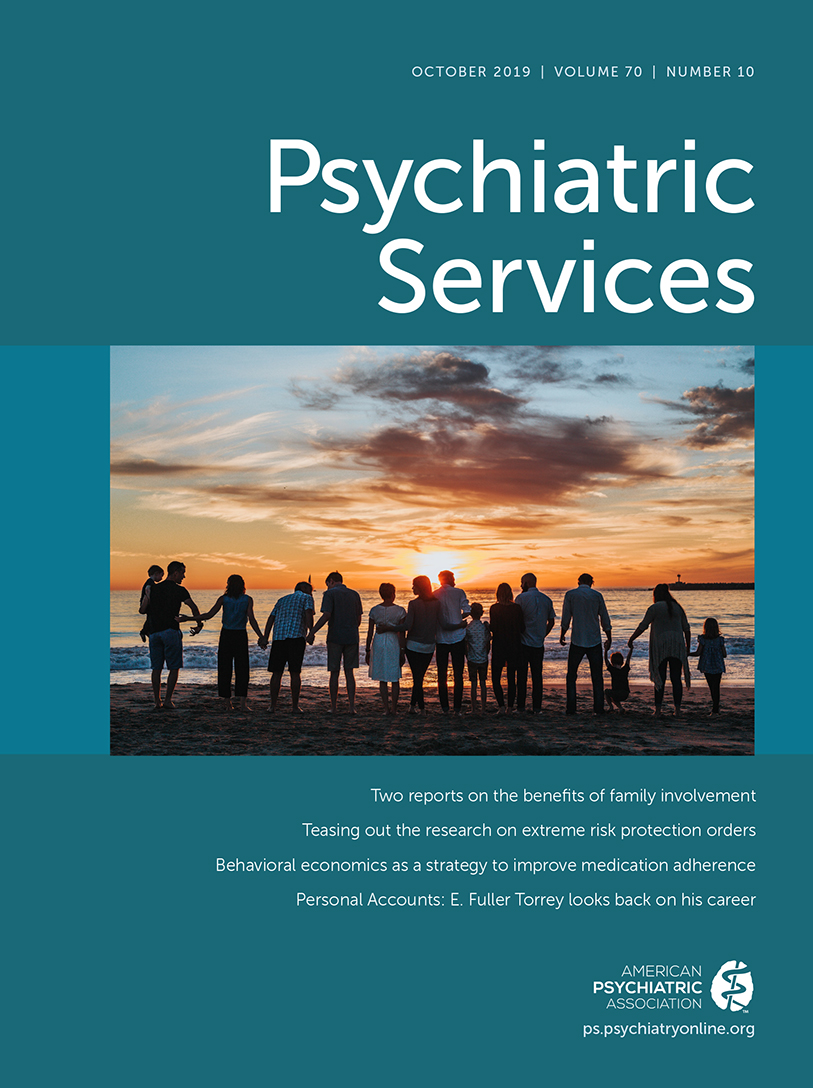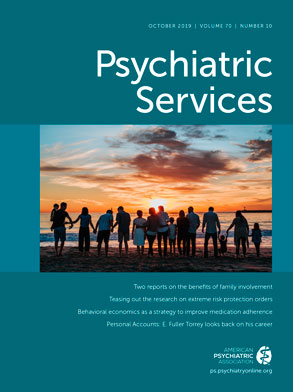The U.S. Department of Health and Human Services has repeatedly proposed altering the rules governing the design of formularies and drug utilization management for the six protected drug classes (antineoplastics, antiretrovirals, antipsychotics, antidepressants, anticonvulsants, and immunosuppressants) in Medicare Part D. Specifically, the proposals aim to promote competition between brand-name drugs by limiting access to some Food and Drug Administration–approved drugs in the six protected classes. The mechanisms proposed include using formulary design, prior authorization, and step therapy for both new and existing patients. The various proposals have claimed substantial savings, although most are unlikely to have emanated from managing the utilization of psychotropic medications (
1). That is, the potential savings from applying new rules to administration of psychotropic drugs are considered modest. The mental health community, in partnership with stakeholders for other diseases that rely on those classes of drugs for treatment, recently succeeded in reversing an attempt at changing payment and care management policy related to the protected classes.
The concerns from consumer groups and other stakeholders are grounded in a history of conduct in competitive insurance markets that has sought to avoid enrollment of the sickest people who require the most complex and costly treatments. The specific conduct has included limiting coverage of and access to services used by people with costly, persistent, and difficult-to-treat medical conditions. The economic term for the phenomenon is “adverse selection,” a practice that has long plagued fair coverage of mental illnesses and substance use disorders. Congress explicitly recognized stakeholders’ concerns while crafting the Medicare Modernization Act that created Medicare Part D and subsequently affirmed its commitment to that policy, which serves to attenuate such economic dynamics.
The high levels of spending and the rates of spending growth for drugs in some of the protected classes have led to these proposals. For example, in 2015 the Medicare Payment Advisory Commission reported that antipsychotics ranked fourth in spending across Part D drug classes, accounting for $6.2 billion and 4.5% of program spending, and on average the cost per prescription was above the Medicare Part D program average. Antidepressant medications accounted for $2.6 billion and 1.9% of program spending, and per-prescription spending was below the program average (
2). A key question for policy makers is how effective are the existing cost control tools available to prescription drug plans (PDPs) for drugs in the protected classes and how much additional risk to patients is created by expanding the available tools to the protected classes? PDPs can use the tools available to them to manage costs and utilization. For example, when generic substitutes are available, PDPs need not cover the branded version of the product, and step therapy for new cases of illness is permissible, allowing PDPs to steer new patients to lower-cost therapies. Thus when low-cost generic drugs are available, PDPs are in a good position to manage costs. The result is that generic drug utilization rates are quite high for these drugs. In today’s market, where generic penetration rates are very high for antidepressants and high for antipsychotics, the potential savings from changes in the protected classes are likely modest (
3).
The ability of PDPs to bargain over prices when generic substitutes are not available is more limited, in part because of the rules governing the protected classes. Thus as new brand-name products are brought to market, PDPs have less flexibility for bargaining. It is here that the adverse selection history and the mistrust it has bred come into conflict with current concerns over health care spending and public budgets. At a time when affordability of prescription drugs is deteriorating rapidly, policy is needed to balance access to appropriate drugs with affordability for consumers and taxpayers alike.
How, then, does one preserve access to the drugs used by some of our most vulnerable citizens (who have repeatedly been harmed by failures in private insurance markets) and promote affordability of prescription drugs? One approach is to step away from the current preferred approach to establishing prescription drug prices in Part D—competition among brand-name drugs. The conclusion of Congress and mental health stakeholders appears to be that relying on competition stemming from restricted formulary designs creates such significant potential for harm that it calls into question the net benefits of competition for these drugs. If that is the case, then perhaps a different mechanism for promoting affordability should be used.
One approach receiving renewed attention is for the U.S. government to engage in targeted price negotiation with prescription drug manufacturers. The general idea behind this proposal is that lack of competition for drugs that are heavily used and paid for by the Medicare Part D program creates a situation in which a fragmented set of small buyers are negotiating with monopolistic sellers. That in turn results in an imbalance in bargaining power. To correct matters, the proposal would consolidate bargaining responsibility in the Medicare program, allowing a powerful buyer to bargain with sellers who possess monopoly power. This arrangement would be retained until sufficient competition exists (stemming from market entry by close brand substitutes or generic or biosimilar products) to discipline prices. Applying such an idea to the protected classes requires recognizing that these drug classes by policy design strictly limit the application of competitive mechanisms. In order to provide a counterweight to the weak bargaining power of the PDPs, the Medicare program would step in and negotiate prices. In that way there would be no restrictions on access to approved medications, and there would be stronger bargaining power to promote affordability. In today’s market the potential savings from changing policy concerning the protected classes are modest, with respect to psychotropic medications, given the high rates of generic penetration in the antipsychotic and antidepressant classes. The negotiation arrangements would, however, be important for promoting affordability as new products come to market. Thus a primary justification for any changes in policy must be forward looking and consider the dynamics of new product introductions aimed at treatment of mental illnesses.

